How to Back Up Phone From Itunes to Other Drive
How to back up an iPhone — three simple ways
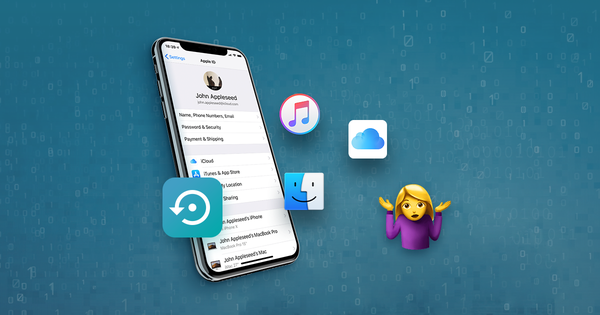
What is a backup?
A backup is a direct copy of all of the important data on your iPhone (read more: What is stored in an iPhone or iCloud backup?). You can use a backup to safeguard your data in the event that you lose or break your iPhone.
Do I really need to backup my iPhone?
If you store important data on your iPhone, then you need to keep a backup of your data. If you lose or break an iPhone without a backup, you can also lose your photos, contacts and message history. Backing up your phone prevents this data from being permanently lost.
Backing up your iPhone is simple, and there are three methods you can use to backup your device. This article walks you through using iTunes, Finder and iPhone Backup Extractor to create iPhone or iCloud backups. The functionality is free in all of these applications.
How to backup your iPhone without iTunes
iPhone Backup Extractor can create backups of your iPhone on Windows or macOS over WiFi or a USB connection -- without needing to have iTunes installed. You can also use this method to access the information inside your backup.
To create a backup using iPhone Backup Extractor, follow these steps:
- Download, install and run iPhone Backup Extractor.
- Connect your iPhone or iPad to your computer via USB.
- Select your device from the left-hand menu.
-
Choose
Utilitiesor clickBackup.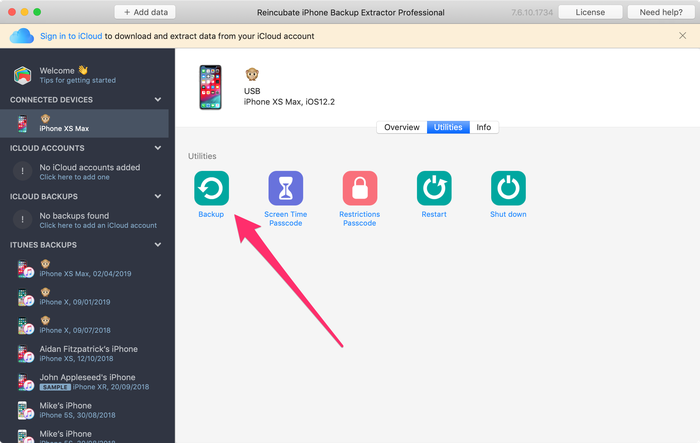
The "Backup" button in iPhone Backup Extractor -
Click
Start. iPhone Backup Extractor will prompt you to set a password on your backup in order to keep your data safe and secure.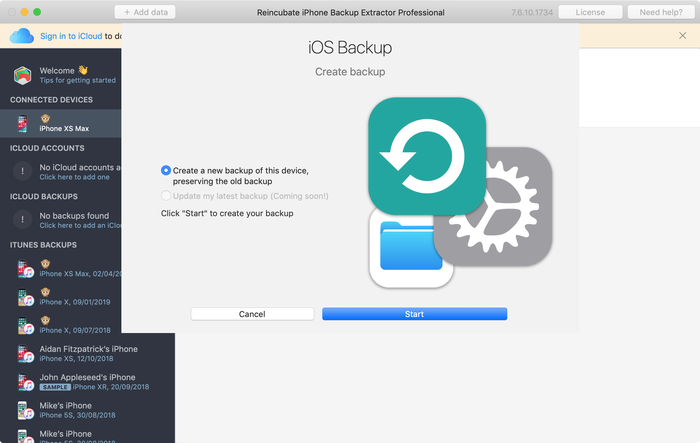
iPhone Backup Extractor's backup creation wizard
Summary: Using iPhone Backup Extractor to backup your iPhone is fast and free, and allows you to access the data within your backup, but you'll need to have access to a Mac or PC.
How to backup your iPhone with iTunes or Finder
You'll need to use a computer to backup your phone to iTunes or Finder, but you can use as much storage space as you have free on your computer.
Here's how to get backups working with iTunes or Finder in three steps:
-
Connect your iPhone or iPad to the computer with a USB and find and select your
iPhonein iTunes or Finder. -
Ensure
This computeris the backup location, notiCloud.If you want to encrypt your data, select the encryption checkbox and choose a password for the backup. We recommend doing this, as it provides better protection for your information. Without setting a password, anyone who has access to your computer can access any information stored in your iPhone backup.
As an added bonus, if your backups are encrypted, Apple will include even more data in them than they otherwise would: such as Health information and the saved passwords in your Keychain.
-
Click the "Back Up Now" button in iTunes or Finder, and a backup should be taken over Wi-Fi. (It's not necessary to hit "Sync" first.)
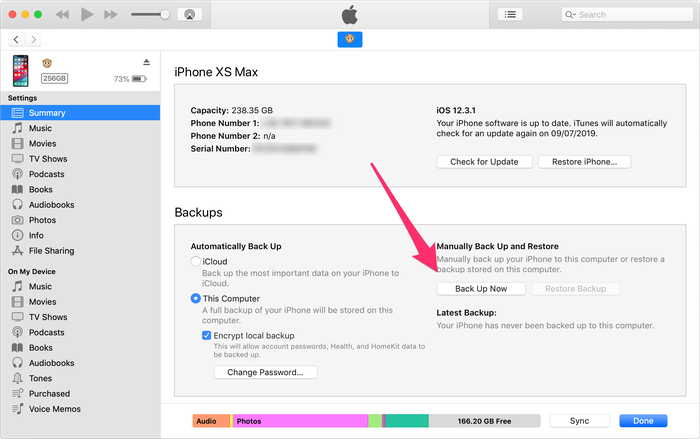
Creating a fresh backup in iTunes -
Wait until the backup is finished, and don't disconnect the USB cable until then. The first time a backup is taken it can take quite a while, particularly for iPhones with a lot of data on them. Subsequent backups will be faster, as only the newer files need to be added to the backup each time. Keep reading to find out how to backup your iPhone overnight.
Summary: Using iTunes to backup your iPhone might provide you with more free storage space than iCloud, but running iTunes can slow down your computer.
(Related: find out how to speed up a slow iPhone backup)
How to enable wireless iPhone backups
To configure your iPhone or iPad to back up over Wi-Fi, you should run through the following steps:
- Connect your iPhone or iPad to the computer with a USB and open the
iPhonesection on iTunes or Finder. - Tick
Sync with this iPhone over Wi-Fi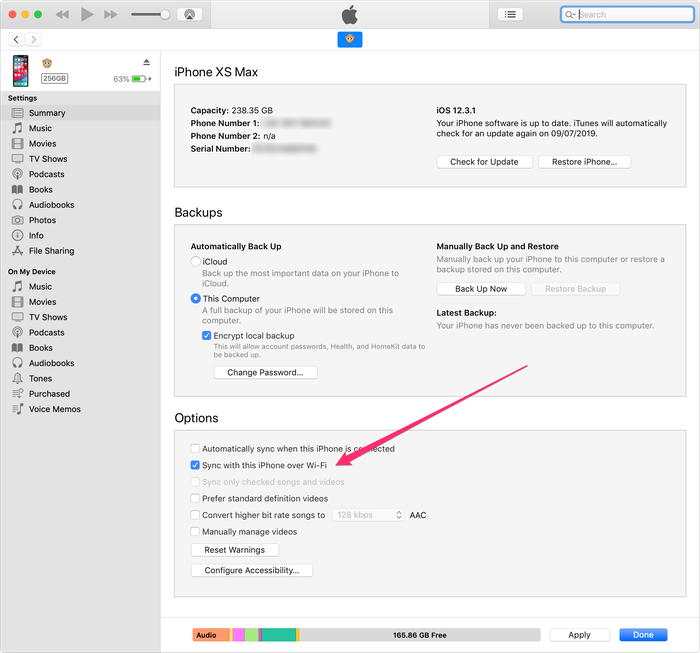
iTunes' backup options for Wi-Fi backups - Hit
Doneat the bottom of the window. - Disconnect the USB cable from the phone.
- Ensure your iPhone is on the same Wi-Fi network as the computer. If so, the iPhone pane should still be available in iTunes or Finder.
- Click the
Back Up Nowbutton in iTunes or Finder, and a backup should be taken over Wi-Fi.
Creating a fresh backup in iTunes
How to get automatic iPhone backups
Your iPhone is able to back up automatically each night to iCloud or iTunes if you satisfy the criteria for automatic backups. These are:
- The device must be locked
- The device must be powered
- The device must be connected to a Wi-Fi network
If your phone is set to back up to iTunes over Wi-Fi, then your PC or Mac must be left powered on and connected to the same Wi-Fi network.
How to backup your iPhone with iCloud
Many people choose to use iCloud, Apple's default option, to backup their iPhone data, because data can be backed up directly from your phone, though you can also create an iCloud backup on a PC, using iTunes, or a Mac, using Finder
Option A. Here's how to create an iCloud backup directly from your iPhone or iPad:
- On your iPhone, go into
Settings - Select
[your name](at the very top of the screen) - Select
iCloud -
Choose
iCloud Backup. You can also manage your iCloud storage from the same menu.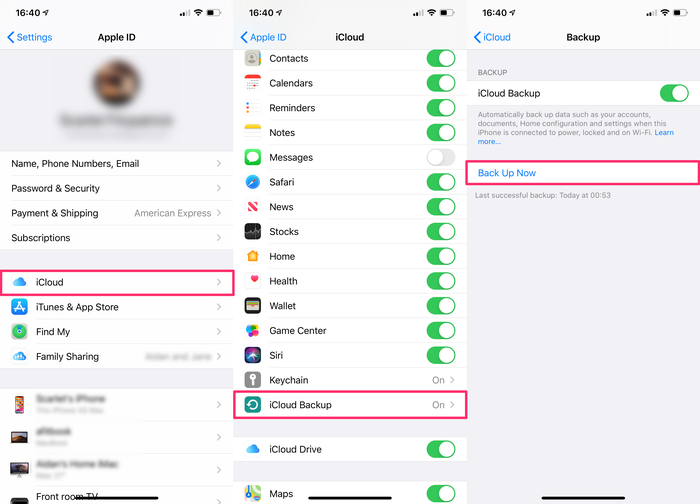
Backup now on iCloud
Option B. Here's how to create an iCloud backup using iTunes:
If you don't want to create an iCloud backup wirelessly, you can also use iTunes to create and save your backup in iCloud.
-
Connect your iPhone or iPad to your PC or Mac via USB and open the latest version of iTunes.
-
Select your iPhone in the top left of iTunes, and scroll to the backup section.
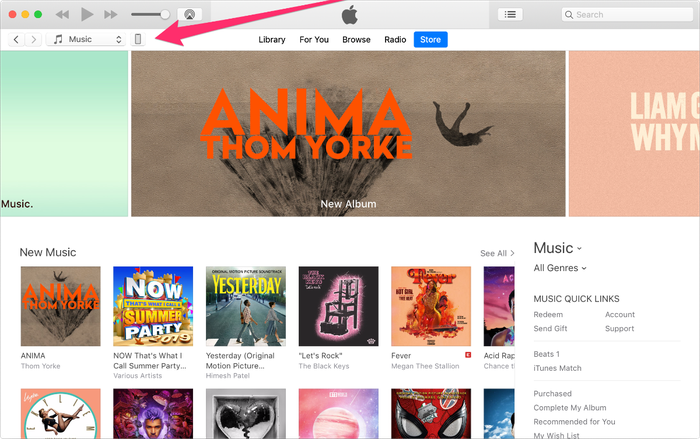
Choose your device in iTunes -
Select iCloud and click on the button reading "Back Up Now" -- it will take a few minutes to generate and store your iCloud backup.
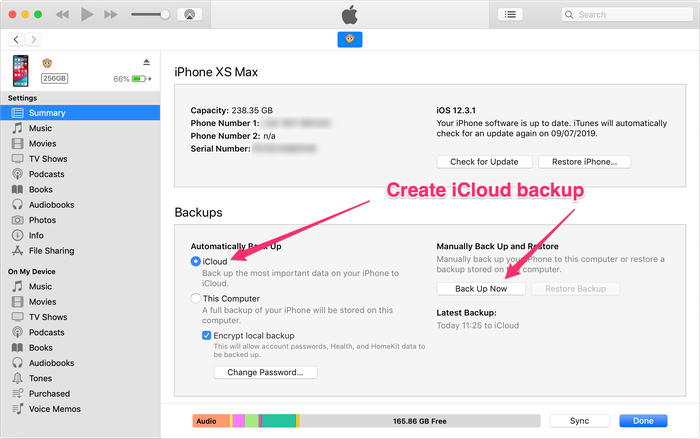
Create an iCloud backup with iTunes
Unfortunately, iCloud only provides 5 GB of free storage space, so you'll need to pay a monthly fee if you need to backup more data.
Wondering how much space you'll need? Apple's latest iPhones provide up to 512 GB of storage, or 100 times more storage space than iCloud will backup for free. The amount of storage you need for a backup will depend on your device and how you use it, but the things that tend to take up the most space are:
- Your iCloud Photo Library. This can grow to be larger than the storage on your phone, as it doesn't all have to be fitted onto the phone at any one time.
- All of your app's data, and any files you store on the device. Apps that include a lot of images, videos or sound files (such as Pinterest, Netflix and Spotify) will use large amounts of storage space.
(Find out how to free up iCloud storage here.)
Summary: you can use iCloud to backup your data directly from your phone, but you'll have to pay to protect more than 5 GB of data, and backups tend to be slow.
(iCloud iPhone backup failed? Find out how to fix it)
Which backup method should I choose?
Unfortunately, you can't choose to backup to both iTunes and iCloud at the same time, but you can switch between the two without older backups being deleted.
Here are some of the things to weigh up when choosing between iTunes and iCloud backups:
| Feature | iTunes backups | iCloud backups |
|---|---|---|
| Lifetime | Forever on your computer | Apple delete iCloud backups after 180 days |
| Storage space | As large as the hard disk on your computer. | Limited to 5 GB without paid storage upgrade. |
| Storage required | No larger than the capacity of your iOS device. | The size of your iCloud Photo Library, with additional content potentially close to the size of your device. As backup snapshots are stored with potentially duplicate data, it is possible for a device backup to consume more space than the total capacity of the device. |
| Security | Robust, so long as a secure backup password is chosen. | Robust, so long as a secure iCloud account password is chosen. |
| Speed | Very rapid as no cloud access is required. Extremely fast when accessed over USB 3. | Speed varies according to the performance of your Wi-Fi, your Internet connection, and the performance of iCloud servers at the time. |
Given the advantage that iTunes backups have in speed of access, we recommend taking an iTunes backup to your local computer before any iOS upgrade. You don't want to end up waiting hours for an iCloud backup restore!
How to restore an iPhone from iTunes
Once you've created your backup you can use it to restore your data in the event that your iPhone is lost or damaged, or if you want to add the data to a second iPhone.
Here's how to switch iPhones using an iTunes backup:
- Connect your computer to the iPhone you want to switch to using.
- Open iTunes (or Finder if you're using macOS Catalina 10.15)
- Select your iPhone from the list on the left-hand side.
-
Click
Restore Backup…(Be careful not to clickRestore iPhone)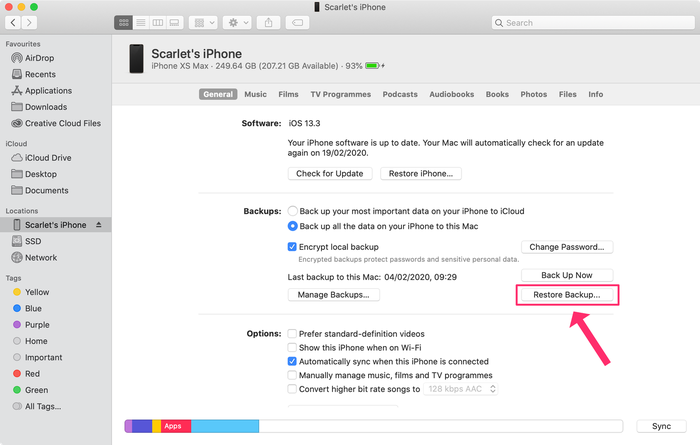
Restore an iPhone backup -
Select the backup you want from the drop down list.
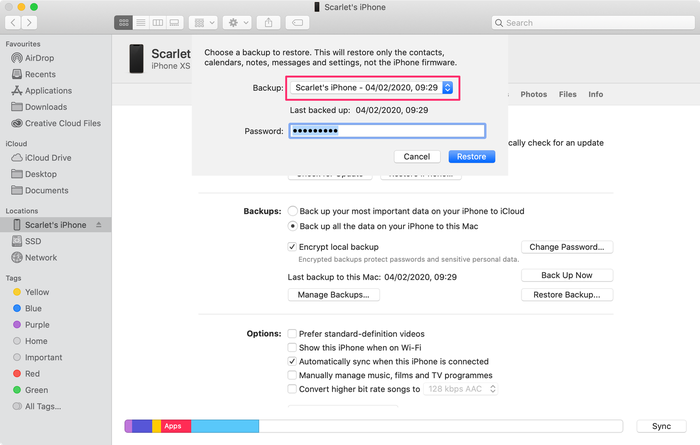
Select the correct backup -
Enter your backup password if your backup is encrypted, and click
Restore. - Keep your iPhone connected until the backup restore has completed.
Aidan Fitzpatrick
How can we help?
Our support team are here to help!
Our office hours are Monday to Friday, 9 AM to 5 PM GMT. The time is currently 9:27 PM GMT.
We aim to reply to all messages within one working day.

Related content
Comments (1)
Can we improve this article?
We love hearing from users: why not drop us an email, leave a comment, or tweet @reincubate?
How to Back Up Phone From Itunes to Other Drive
Source: https://reincubate.com/support/how-to/how-backup-iphone-itunes-or-icloud/
0 Response to "How to Back Up Phone From Itunes to Other Drive"
Post a Comment